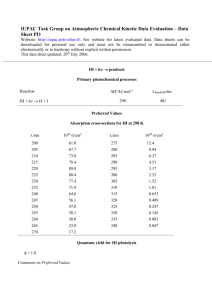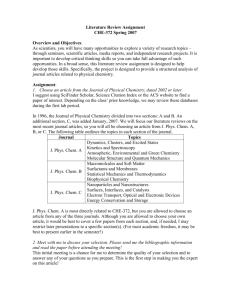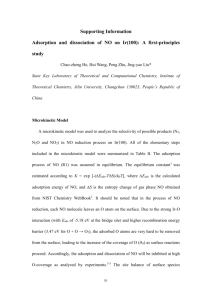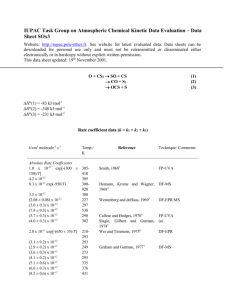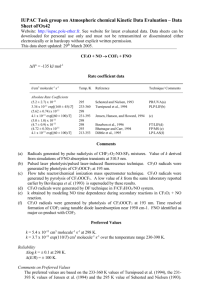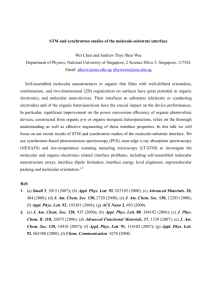How to write a paper
advertisement
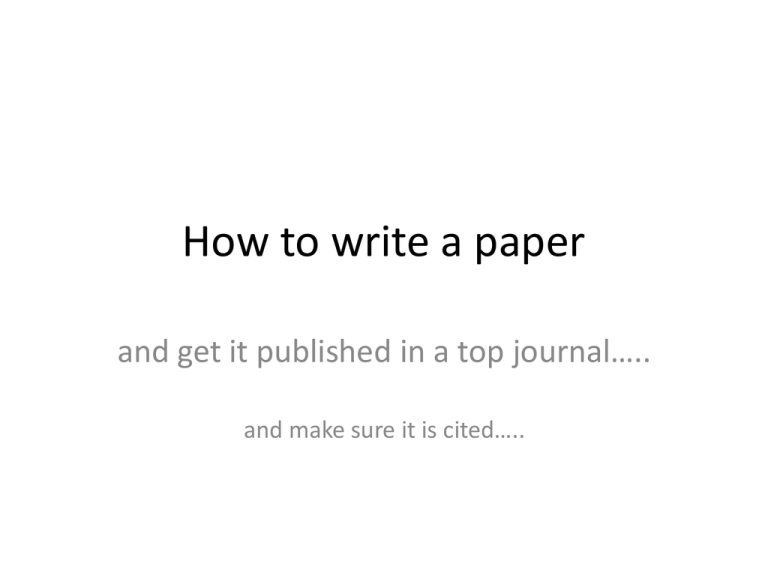
How to write a paper and get it published in a top journal….. and make sure it is cited….. • Why do science? • Why publish? What is the story? • What data/figures needed for a compelling story • Who will the co-authors be? - substantive contribution to the data/analysis to be presented - usually best to identify from the beginning to get more of their help! - usually boss decides, try to make their life easier! - can still add more later if there are gaps in story What is the best journal to aim for? • Who is your desired audience (where would you expect to find papers like this)? • Letter or full article? • Journal impact factor Science, Nature (~30) Nature Materials/Chem/Phys, (~20) JACS, PNAS, Angewandte Chemie, PRL, Advanced Materials, Nano Lett Chem Comm, Adv Funct Mat, ACS nano, APL, Phys Rev X? J Phys Chem, J Chem Phys, Phys Chem Chem Phys, Phys Rev B Chem Materials, J Materials Chem Check Publishing guidelines for that journal • Length? • Number of figures? • Abstract? • Experimental? • Manuscript template (e.g., in word doc), format / resolution of figures…. Writing: Start with figures You are telling a story in words and pictures. “As can be seen in Fig 1. It is easier to then write the results/discussion around the figures “short clear crisp sentences” Show in group meetings, show to friends etc May highlight the need to do a few more expts to fill in gaps You must give data for each statement. Format the figs consistently, but will likely need to change figs throughout writing process. Write descriptive captions. Writing: results and discussion • Method result conclusion • Write to the figures - starting with ‘Figure 1 shows……’ • Copy… • 1) Write in words the data in the figure. Describe the data well, then offer interpretation. If there are many possible interpretations, weigh them up with evidence. • Funnel • Put the data in the context of the literature – these may be refs. Writing: intro • I always write this after the main body • Questions to answer in intro: – Why is it important? (motivation) – What else has been done (most relevant)? Controversy…? (no need to ramble on about every paper you’ve read in the field) – Why is it challenging? (why has no-one else done it?) – What is your clever strategy? • I would then finish the intro with a synopsis of the paper. A roadmap of what’s coming up (even if it gives away the story) Writing: Conclusions • Summarize key findings and evidence for them • Reiterate importance of the work and speculate about what some of the implications could be. • Often ends as cover letter • Abstract is not an introduction – Max 1 sentence of motivation – Most of it needs to succinctly summarize highlights of paper (results) and how you achieved them (experimental design) Writing: adding references • I would usually do this towards the end. Of course it helps if you have a clear idea in your own mind of what the relevant literature is. • Cite key papers from that journal (first, most comprehensive….) and cite them accurately. • Bibliographical Software? (Endnote? Papers?) – Availability to other coauthors • Formatting specific to journal (software can do) • Usually takes many iterations with co-authors (tracking changes) • Often substantive changes to structure, presentation of data….. • • • • A mix of authors sometimes helps. How well can you write? People read so write it as best you can. Increase but 5% Submission • Submit to 1 journal • Online on journal website • Usually a pain, e.g., need to upload separate figs in addition to manuscript (check beforehand) • First step is to write cover letter that convinces editor to send it out to referee’s for review. – Explain why important work, appropriate for journal. Can have a less formal tone than paper (only editor will read the letter) – Also suggest a number of potential referee’s. • It will make you look at papers very differently • Who writes a good paper? • Who are your favourite authors? • Join the community • Time?



